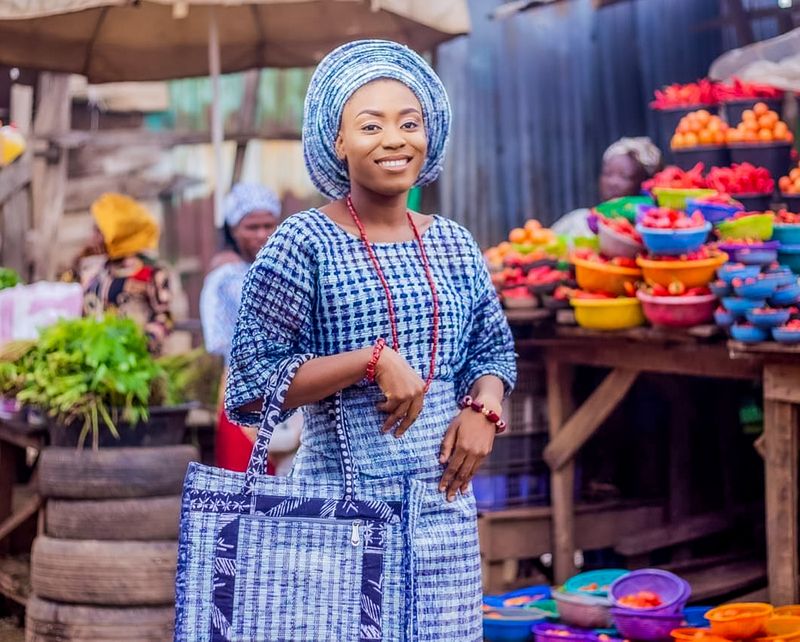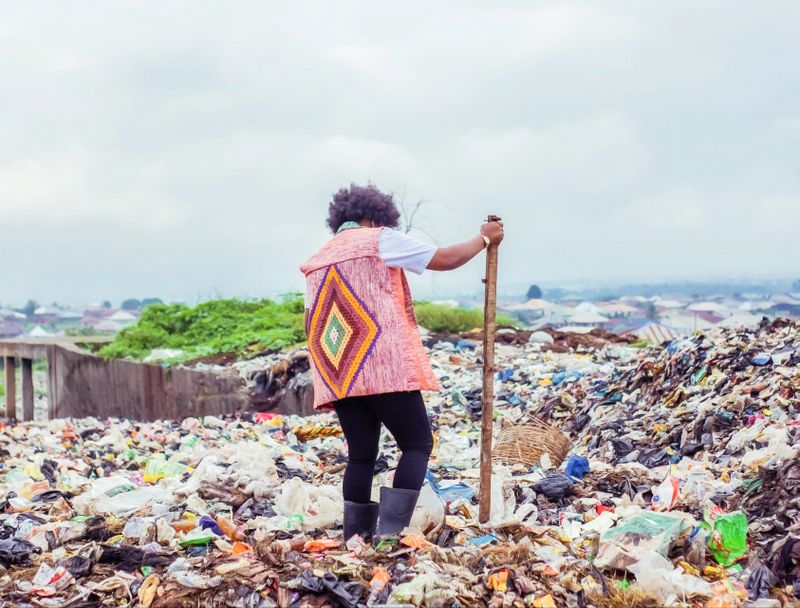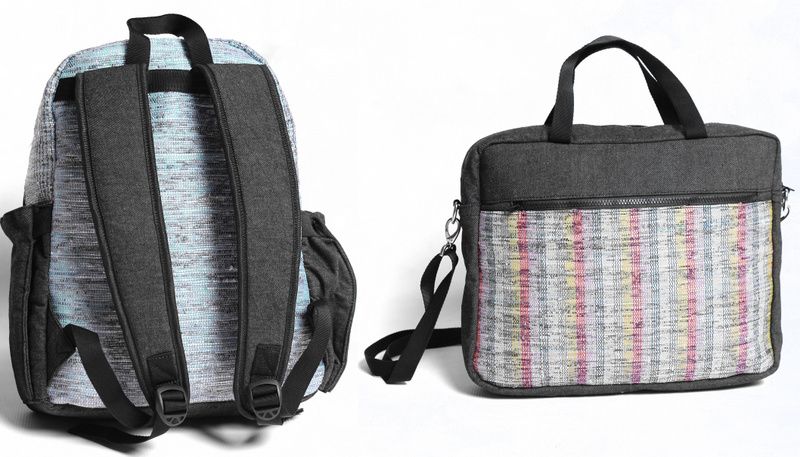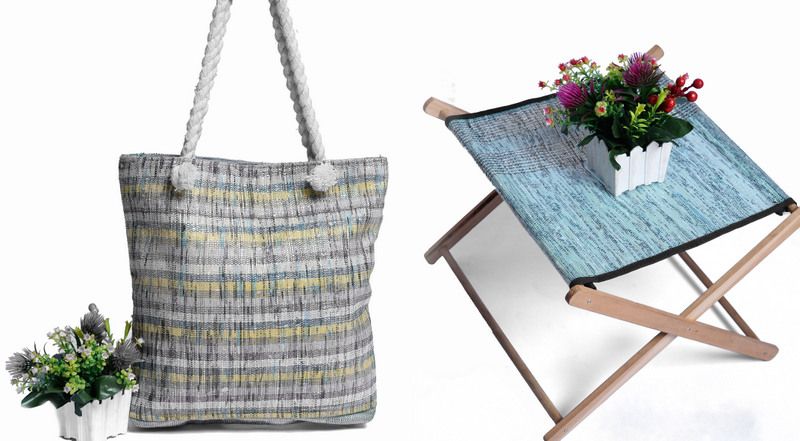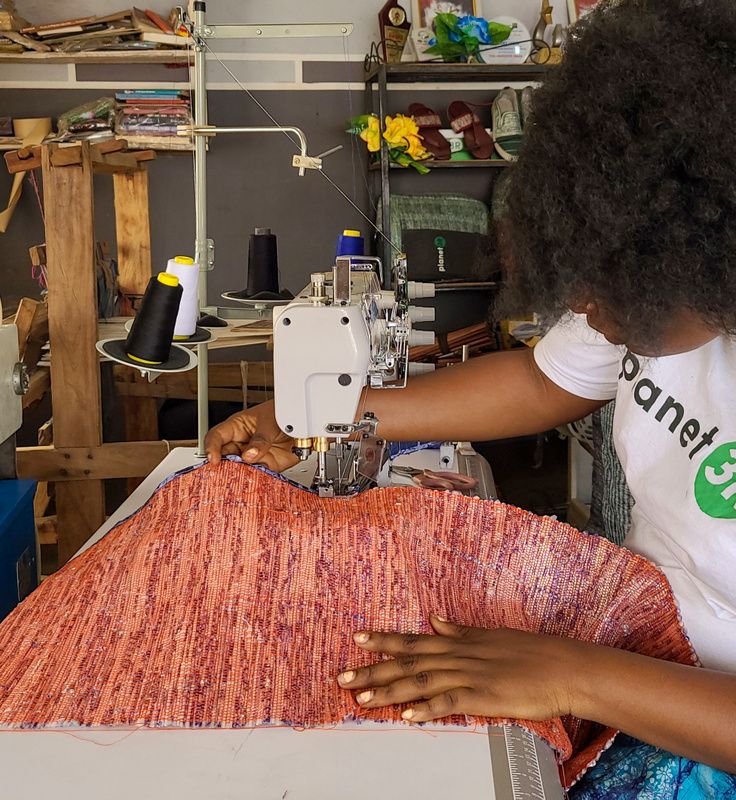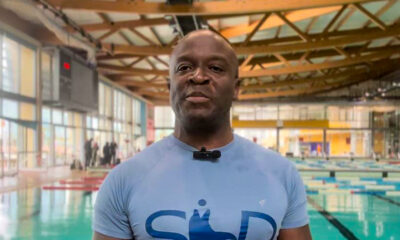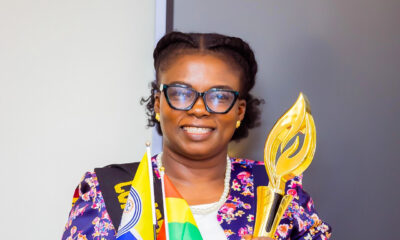News
How Adejoke Lasisi’s Passion for Aso-Oke turned into a Sustainable Solution for Her Community’s Waste Problem
At only nine years old, Adejoke Lasisi began learning to weave aso-oke under the watchful eyes of her mother. It would take her another 15 years to master this traditional handwoven fabric of the Yoruba people of Nigeria. But as the young entrepreneur explains it, by the time she left university, she had a useful source of income and a great way to make new friends.
“I began weaving aso-oke textiles professionally while serving as a corps member in the NYSC (National Youth Service Corps). My clients were mostly couples preparing for their traditional wedding ceremonies. I later approached the NYSC empowerment program with an offer to provide hand-weaving skills training for corps members at a discount,” she said.
While training several fellow corps members in camp during her year of national service (obligatory for all Nigerians), Lasisi launched herself into commerce with an aso-oke weaving center and training school. Her Jokelinks Weaving School opened its doors in 2013.
That was only a first step, however. Lasisi quickly realised there was a much wider opportunity to sell her products, but that required innovation and new techniques.
“I was speaking with potential clients about the appeal of the fabric and discovered that many people stopped wearing aso-oke because it was hard and unstylish. I, therefore, created a loom that makes the aso-oke lighter while creating attractive designs. For me, Jokelinks is all about promoting culture, creating social impact, and creating job opportunities,” said the designer.
However, her burning desire to be a changemaker led her down an unplanned path. Years of seeing communities with poor waste disposal systems nagged at her until she felt the need to do something about it.
“I kept noticing the issue of indiscriminate waste disposal and thought about what I could do for the community. Most people in the rural community live in tenements. None can afford to pay waste disposal companies or think of the best way to discard waste without causing environmental hazards.
“But the truth is, you can’t tell people to stop doing things if you don’t give them solutions to the problem. I can’t ask them to stop throwing waste or to pay waste management companies to dispose of their dirt when they haven’t fed themselves,” said Lasisi.
So in 2019, Lasisi registered another textile company, Planet 3R. The 3Rs represent the company’s goals: reduce, reuse, and recycle. Despite its registration, Lasisi was hesitant about commencing operations.
“I’d been weaving only aso-oke for the past twenty-seven years and was very reluctant to start Planet 3R because I kept thinking to myself, “Will I stop the aso-oke business that’s bringing in money to do something uncertain?” Questions like, “Who will buy waste?” and “How will I do it?” kept running through my mind,” she said.
Ultimately, the COVID-19 lockdowns in 2020 became a blessing in disguise for Lasisi. When her aso-oke business ground to a halt due to a lack of patronage, she decided to focus on Planet 3R. Together with her staff, she began making prototypes of plastic-textile products.
“We pick discarded pure water sachets from the roads and sort them into different colors. Then we wash them with disinfectant, let them air dry outside for three days, and shred them into bits. The cutting department shreds about four hundred nylons in a day,” Lasisi shared.
A piece of pure water sachet becomes sixty to seventy inches long after going through the shredding process. It is then turned into a roll of plastic yarn and weaved on a loom with a bit of cotton thread. This makes Planet 3R’s plastic-textile products 90% plastic and 10% cotton.
“A dress I made recently comprised twelve yards of fabric. We used over five thousand pure water sachets to create the plastic textile that was sewn into the gown that I wore,” said Lasisi.
Planet 3R creates fashion items, including slippers, bags, table mats, backpacks, laptop bags, and shopping bags, which are their fastest-selling products.
“Our backpack is 15,000 naira (US$32). The laptop bag costs 10,000 (US$22), while the shopping bag sells for 4,000 (US$8). Our baseline for shopping bags is 300,000 naira monthly (US$650). But I prefer bulk sales to one-offs because it’s stress-free.
In September 2022, we made 230 pieces of bags for a Google event. It was easy to move those in bulk. We’re also on eCommerce companies like Jumia and Etsy, which makes shipping easier and logistics cheaper for our customers,” Lasisi explained.
Over 70 thousand kilograms of plastic waste have been transformed into textiles by Lasisi with the aid of her team. With over twenty employees and a budget of $19,800, Planet 3R plans to expand its current production to help more young people launch sustainable textile businesses.
“Going forward, we plan to turn this plastic into a damp-proof membrane. During one of our prototyping stages, we realised that water doesn’t penetrate through the fabric once we’ve done heat transfer on it. I realised that if we decide to make a damp-proof membrane, it will be a cheaper and more lasting solution for many who cannot afford to buy damp-proof membranes for their buildings. It will prevent houses from dampening,” said Lasisi.
In 2022, Planet 3R was nominated as one of the six global participants in the British Council’s Global Making Matter Challenge.
Olumide Idowu, a climate activist and media consultant for the African Development Bank Group, is a great supporter of Lasisi’s initiative.
“She didn’t begin her journey thinking of climate change; she just saw something wrong and decided to fix it. By adding value to the environment, she subconsciously contributed to climate action. That is the aspect of her business that caught my attention. Climate change is about practical solutions that people can see, feel, and touch,” he said.
“If you want to support climate action by turning waste into wealth, adapting, mitigating, and creating job opportunities are some of the key factors. She is putting all of this into action, representing some of the most significant climate change solutions. We need more young people to do that,” he concluded.
Story by Gabriella Opara

